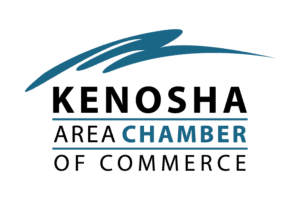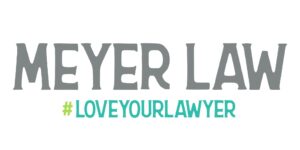Hosts: Have you ever wondered how successful architecture, engineering, and construction companies scale their businesses? And have you ever wanted guidance on how to get more growth, wealth, and freedom from your agency? Well, then you’re in luck. I’m Justin Nagel, your podcast host. We interview successful AEC business leaders to learn how they use people, processes, and technology to scale their businesses. So sit back and get ready to learn from the industry’s best. This is building scale.
Justin: On today’s podcast, we have Aaron Mills. He’s the owner of Daaxit, a fractional CFO services company that focuses on helping contractors. He has over 25 years of experience in setting and evolving strategies to manage companies through the rapid growth and change of companies. He’s worked with companies that have been nationally recognized for some elite awards based on their financial performance. Some of these are the Crain’s Chicago business, Fast 50 in 2019, Inc 5000 fastest growing private companies, 2016 to 2019 and engineering news record, ENR top 600 specialty contractors, 2016 to 2019. And I would be silly not to mention the fact that the wonderful logo of Daaxit includes Aaron’s dog. So, Aaron, welcome to the show.
Aaron: Thank you, Justin. Thank you Will.
Will: Welcome.
Justin: Before we go, I want to mention Dax. I’ve seen a picture of this dog. Gorgeous dog, beautiful German shepherd, right?
Aaron: Right. Okay. Yes. So, so we were trying to figure out a name for the company and, you know, it’s specifically a German shepherd, which is a family dog and a loyal dog and a protective dog. And when we were just trying to figure out a name for the company, we’re like Dax daxes it. So why don’t you just use Daaxit?

Justin: I love it.
Will: Beautiful, I love origin stories. That’s great. So tell us more about who you are and how long you’ve been in the construction industry?
Aaron: Yes. So, I’ve been in the construction industry for over 20 years now, mainly with the family business owners. And it’s a very unique environment. A lot of these people have, you know, gone in through the ranks from handling tools to actually having a business. And they’re there. They’re very down to earth people. So it’s a very rewarding type of work environment.
Will: And what role did you play and why did you start Daaxit?
Aaron: Yeah, sure. So, I’ve been in the finance area for 25 years. I’ve always wanted to start my own company, and I think that’s how I aligned well with business owners. And, you know, my last deal scaled a business from 30 million to 90 million and sold it and there wasn’t a place for me anymore. So I had this venture of, what am I going to do next? And, and I realized that, there’s a lot of business owners that don’t realize what a CFO does. And they think that they’re too expensive. So that’s where my vision of helping many business owners instead of just one business owner in the financial area of their business.
Justin: That brings up a good question, what does the CFO do specifically for construction business?
Aaron: It’s funny, I’ve seen companies from 4 million to 15 million and 30 million and the business owners really don’t know what their financials say. And the reason is that they rely on these people that they think are experts. You have your bookkeeping accounting department, they’re recording the costs and you have a CPA firm that are worried about your taxes. So they think that they’re covered from a financial accounting perspective. But what they’re missing is that strategic partner that can bridge the financial data, the taxes, the business planning, and the strategic planning with the owner themselves. So that’s the part that they’re missing and that’s where business owners just don’t know what their financial status is and how to move forward. And that’s what a CFO does.
Will: Can you give us some examples of that? Some real examples of what you’ve seen, just to help people understand what is it that you’re doing specifically in the construction industry? What does that actually mean? Translate that a little bit.
Aaron: Sure. For example, I had a $4 million client and they’re think they’re there by their numbers. They’re making 40% gross profit, making a 20% net income, and their financials were inaccurate. So they were making financial decisions based off of what they believe their financials were. They thought they were making all this money. They actually invested three quarters of a million dollars in new capital investments. What they didn’t realize is that now you have to pay $26,000 a month to service their debt. So that’s a lot of money for a $4 million company. We were able to restructure their gross profit and their pricing to actually overcome financial hurt.
Aaron: Another example was a $15 million company and they were what I call growing broke. They started at 8 million, 10 million, and then all of a sudden jumped to 15 million and the business owners were like, this is great, we’re at $15 million. And what they didn’t realize is they lost a quarter million dollars that year.

Will: So you brought up an interesting term, “growing broke”. I want to get back to that because in your experience you’ve probably seen a lot of things happen across and probably some repetitive themes. What’s probably the number one issue that’s plaguing the construction industry from a financial perspective?
Aaron: Well, I think it’s financial clarity because even with these different companies, the $15 million company had a CPA firm that they think helps monthly with the financials, but the financials had inaccuracies, where revenue were going up and down, gross profits going up and down, and net income is going up and down. So there was that lack of financial clarity. The owners almost put their hands up and going what’s going on and nobody can tell them – there’s a $30 million company that had a full accounting department, had a controller in place and was in a similar situation. And that company was stagnant. The business owner was stagnant for the last three years and they just stayed in that 30 million range. What we did there is not only bring financial clarity for the company as a whole, we broke the company in silos so that we could create financial clarity in silos. And we were able to make business decisions to strategically grow the business.
Justin: So when you say silos, do you mean this particular type of work that we do compared to this work compared to this work? Are you talking about departments? What does that mean exactly, “in silos”?
Aaron: Specifically we work in the construction contractor business, and a lot of times you do different types of work. So with the different types of work that you do, you should expect different type of margins and net income. That’s where we kind of creates silos, so we could have a service department, we can have a capital department, we can have a travel department. So we broke these departments up and actually gave ownership to the operation managers of their financials.
Justin: So having accountability specific to that department can obviously give a little bit more clarity for the person running it. I would hope that would be the case, but then obviously the big picture, breaking things down and bite-size makes things easier to digest.
Aaron: Yes, exactly. And then on the backside of it, it can actually create a natural competition because now you have all these operation managers that are responsible for their P and L’s and you have a monthly meeting and you review those PNLs, which are now accurate. And the business owner is there watching their operation managers manage their silos or departments.
Will: So I think, when we were talking in our pre-interview, the number one issue you use the term called revenue recognition and the solution to that is kind of what you just described; to be able to recognize that revenue in those different lines of business, specifically in a construction company. When should you recognize revenue? How much and how often should it be done? It sounds like these are things that aren’t normal only put in and you help with that. And what is the outcome? Once you start doing those types of things?
Aaron: Sure. So revenue recognition is probably one of the most complex calculations and concepts, and specifically in the construction and contractor business. I’m not going to go in details on that monster because that would be a prior to our conversation, but so revenue recognition. Really what we’re talking about is, these construction businesses have steps of where they’re at. So, when I talk about a $4 million company and a $15 million company, and I’m talking about $30 million company, I’m talking about a $90 million company, these are different monsters and, revenue recognition like a business owner. You know how profitable you are on a job? Well, when you’re at a 4 million, the business, no owner knows how profitable in general, they are on every job. Now, when you get to the 10 or $15 million, you’ve got project managers and they’re running jobs. So now you’re relying on project managers knowing their profitability.
Aaron: So all of a sudden the business owner has taken a step back and has less. And when you get to the 30 million, now you have multiple project managers and operation managers. So the revenue recognition is just like a blur to the business owner. That’s where you really got to put down some policies and procedures and accountability to be able to track revenue recognition. And typically they do that on a “WIP” schedule, work in progress. And to make the problems even more complicated is the $4 million company are working on projects. There may be a hundred thousand dollars, 10 to a hundred thousand. Now you get down to a $15 million company. Now you’re working at projects typically between a hundred thousand to a million. So now you’ve got these big, massive projects that are lasting months. And if you don’t know, if you’re not going to make money on that, halfway through that project. You don’t even know. You don’t know what you don’t know. So that’s part of the revenue recognition.
Justin: That can be really scary, I would assume, right? So obviously everybody wants to grow, especially if you listen to this podcast, you want to scale like that. You want to scale your business, but the 4 million version of you compared to the 15 million version of you or your company have different problems essentially, you need people in between the scale, but then you also need to know, are you going to make a profit, which for a smaller contractor, that’s a scary thought, Aaron, like not knowing like completely, like, I don’t know, maybe we’ll be profitable.
Will: So you use the term growing broke, is that real? Is this where this is related? Like what does that actually mean?
Aaron: So basically again, once you start growing, things are kind of out of control and if you don’t have accountability and accurate data, then you really don’t know how profitable you are. For example, this $15 million company, they got projects that are over a million dollars and all of a sudden they started saying, okay, we typically run 28% gross profit and all of a sudden we’re running at 20% growth. Well, if you do the math of 15 million revenue versus 10 million revenue versus 28% gross profit and 20% gross profit, you’re actually making less money and you don’t even know it. You’re just thinking, wow, I’m doing 15 million.
Will: So the bigger they get the less profitable they’re getting. And is this what you mean by growing broke?
Aaron: If they don’t have true visibility of their financials, yes. Because they don’t even know it until it happens.

Will: Now what about the contractor dilemma? You know, how does growing broke relate to the contractor dilemma of bidding on the next job, getting the next job and being the cheapest on those jobs to get the job. How does that relate?
Aaron: Well, I’ll probably contradict what most business contractors think, which is I have to get the next job. You don’t have to get the next job. You want to work with people that value you. It’s not always about the lowest price. You know, you might work with this one contractor and they’re the biggest headache and the worst. And you’re making no money yet. Our environment there’s more work out there than we can do. So work with the people that value you and will pay for the price that you demand. So that’s probably opposite of what a lot of business owners think, but once they think it, they actually will make more money.
Aaron: I’m going to give an example here. I was working with a client. And we are going over the TNM rates time and material rates. We determined that their pricing was under market indefinitely, undervalued versus the service that they provide. And so we met with the business owners and we met with the project managers. We said, we’re going to raise our prices 10%. And we’re going to create a service price for 20% increase. And we all agreed. And then we circle back a month later and everybody was doing the price increase except for the business owner, because the business owner was scared that they weren’t going to get the job. So the business owner basically devalued his company when the clients will actually pay the higher price if you add that, if you create that. So that’s probably one of the opposite things business owners think of.
Will: I hope everyone heard that nugget there. You can increase your prices and still get business.
Justin: Yeah. That’s a huge mindset shift that I think is really important for people to come to terms with that. So thank you Aaron, for saying that.
Aaron: You’re welcome.
Will: You know, to kind of to bring it all together…in order to be accountable, you have to be able to measure, right? Peter Drucker once said you can’t improve what you don’t want. So what kind of KPIs, key performance indicators should every owner know and why, from your perspective?
Aaron: One thing that probably a lot of business owners don’t do is they don’t sit down once a month and dig through the financials and go through the financials income statements. That is one of the most important high level KPIs that every business owner should be doing. And if they don’t understand their financials, they need to talk to somebody that will help them understand their financials. And sometimes it’s not your accounting people, sometimes it’s not your CPA. So that’s the number one. Within your financials, you need to know what your gross profit is, your revenue, what your billing is, and how much money you’re making off your job. That’s another key point – your overhead. If you’ve got your revenue, you’ve got your gross profit, then you have your overhead. Obviously you want your gross profit to be more than your overhead because that’s your net income.
Will: So obviously to know how to make money it’s key to understand my profitability. What does my balance sheet do?
Aaron: Your balance sheet? Well, basically the balance sheet tells you how you can pay your bills. So, if you have a weak balance sheet, then you’re probably struggling to pay your vendors. You’re probably struggling to pay your employees. So that’s what your balance sheet does. And then if you understand how to read a balance sheet, it kind of explains the story to you, and you can make significant adjusting on how to get your customers to pay, refinancing, making connections with banks that will help you grow because that’s another example a lot of contractors have; when they just go buy equipment, they just go buy equipment and they get whatever interest rate that they can get at that time. Whereas, if you have an established banking relationship, you could ideally have favorable financing terms so that you’re not growing broke.
Will: There’s definitely a strategy involved and the strategy is kind of higher level. You did say that. See if you know, people have in their minds that CFOs are expensive. So how do I know as a contractor or as a GC? How do I know? What were the key indicators that I need to have a CFO? Whether it’s in part or in whole, what are those indicators?
Aaron: Do they have a business?
Justin: Say Justin’s carpeting business. That’s just me doing all the work and everything. That’s not CFO-worthy, I would assume. Right. Right. So at what level does it make sene? It’s a, yeah, you definitely, without question need to have somebody in place. That’s really taking a hard look at your finances.
Aaron: I hate to put numbers on things, but if you want to put a number on something, you could be talking around $4 million because the thing is, as you even grow more, it’s going to be even more important because the contract business is you have all this money going in and out. And how do you manage all that money going in and out? So while I got a $500,000 job but now I got to pay vendors, I got to pay my employees. When am I going to get paid? And how do I manage all that? So if you’re struggling with money and don’t have understanding of the financials, which I don’t think most business owners have, that experience, those are key for a business; your financials, the number one reason contractors go broke is cash flow. Well, again, everybody gets excited that they’re growing. Like I mentioned, the $15 million contractor, they’re just getting excited that their revenues keep on going up and they’re like, man, we’re great. But all of a sudden they didn’t realize that they actually lost a quarter million dollars. So here you have a business that you think is succeeding, but you’re bleeding out cash. And then if you don’t have cash, how do you run a business?
Justin: The saying right we’re top line for vanity, bottom line for sanity.
Will: That’s it right there. You can’t look at the top line number. Doesn’t matter if you’re making no money, you know, what’s the difference between a $10 million company making half a million dollars versus a $4 million company making half a million dollars. Right? Which one would you rather be? Right. So right. I’d rather be the $4 million company making half a million dollars because there’s a lot less problems there. More money, more problems. So you said revenue of 4 million, plus what about employee count or growth rate?

Aaron: Growth rate. I mean, those are all key factors. To be honest, I go back to, they would be smart for any business owner to honestly talk to a financial professional that’s in their market because what you don’t know is what you don’t know. And it’s one of those scary things where business owners are afraid sometimes to ask for.
Will: So when we talked a little bit in our pre-interview and I’m going to, I want to use a phrase here that I learned a while back go there, they’re getting revenue in. And, but then there’s certainly to pay, you know, pay their employees, pay for the pay their vendors. And so they take on the new job and they’re essentially robbing Peter to pay Paul. Right. And so they’re using sort of the next job to pay for pay for the previous job, you know, expenses. Right. So it’s a version of growing broke.
Will: You’ve already talked about how to maybe fix that, increasing your rates, things like that. But, you know, is there such a thing as what’s a healthy growth rate for a construction company, a builder, contractor… what does a healthy growth rate look like?
Aaron: That’s a very, very interesting question. You know, a lot of it just depends. It depends on if you have the pieces in place. So a $15 million company versus a $30 million company looks a lot different. If you have the business plan and the people in place to grow a company, you can grow 50% and not grow broke, but if you don’t have pieces in place, you can grow 10% and grow broke. So putting an actual number on that is somewhat difficult. I would say on average, I would say 20 to 20% is a good average number to grow.
Will: Year over year, you’re talking about your 20% year over year. Okay. Yep. So healthy 20% without going broke, you could do it 50%, but you have to have a lot of pieces right in place, financially speaking, and 10%, 5%. It might be a little on the smaller side or you’re a really big company, right? One of those two things.
Aaron: So obviously CFO in place. That’s one of the people, like we’re in a US company so people and process are huge. Obviously podcasts, people, process and technology being huge to us just in general.
Justin: So you need a CFO if you want to grow, not broke, if you want to grow healthy. Are there other pieces that need to be there for a contractor to be growing healthy?
Aaron: You have to have a strong management team. It really depends on the size of the company because the size of the company can’t afford three C seats when it’s a $4 million. But when you get to 15 to 30 million, that’s where you need a chief operation officer. That’s a strategic partner that can help run the operations and allows the business owner to actually kind of work out on the business versus in the business. Because that’s going to be one of the key factors of being able to grow the businesses, creating those levels of support casts that can help, help you grow a company. And one of the things that probably a lot of companies don’t think about, that’s probably real, that’s important is an HR function. Because if you’re going to start growing, you need to have a culture and you need to have employees. So that’s another key piece that I think is lacking in a lot of companies.

Will: That’s funny, you’re coming from a finance perspective and you’re talking about people being important. So those are great insights. I hope everyone was listening to that. So financial person talking about people, that’s, I’d say that’s something. Are there any other things that you feel everyone should know, you know, tidbits of information that you feel that people could walk away with and maybe even implement right now in their business? Even one little thing. What would that be?
Aaron: Plan. Put a yearly budget together, sit down once a month and compare your financials to your plan. And make sure that you’re executing your plan. When you set goals, then you have a target. And that’s what a budget is.
Will: Sounds like a plan Aaron. You’ve been awesome.
Justin: Oh, hold on. Before we end, I want to know Aaron, we’re going back 20 years and hopping in the time machine…what would you tell yourself?
Aaron: 20 years ago? Stop watching TV. One of the big things that I’ve changed in my life recently is making learning fun. So instead of sitting and being entertained, have your entertainment be learning.
Justin: You have no idea how happy that information makes me; I’m in the same path I’ve been waking up at 5:00 AM doing personal growth, doing learning. Optimizing your life isn’t habits or is it confidence or is it all these things? So I’m literally giddy. That’s, that’s the word I’m going to use. I’m literally giddy so if you are listening and you can’t see me, definitely go to YouTube. You can see my face. This is the game face.
Will: I want to take it a step further. In all seriousness, why and what would you have changed actually, had you done that? If you had taken that path 20 years ago?
Aaron: Wow. That’s a deep question, right? That’s, to be honest, it’s just a mindset and a lifestyle that I wish I had a while back where I believed in investing in myself more. And in doing that, I probably would have stepped out of an employee role sooner and would have started my own business because I started to see that there’s a higher value of what I can do for more than just one business owner. So I probably would’ve started my own business earlier.
Will: Thank you for sharing. I love hearing that. Aaron, you’ve been awesome today. Thanks for coming on the show. How can people connect with you if they want to get a hold of you or get in touch with you?
Aaron: My email address is aaronm@daaxit.com or you can just Google us Daaxit.
Will: Beautiful.
Justin: We’ll drop all the social links and all that kind of stuff in the notes section for everybody. Aaron, again, you were awesome. I love the personal growth journey too. I’m going to be contacting you after this just to kind of shoot the shit a little bit about that. So be on the lookout for my emails.
Aaron: I appreciate you guys, obviously we have a great time working together, so thank you for your time. Thank you for doing this and for sharing, not only my message here, but your message.
Justin: Thank you. Thank you for joining us today. And listen to this episode.
Will: If this episode did help you…
Justin: Then be sure to share it with someone else who needs it.
Will: If you want to be a guest on the podcast or looking for additional help on your journey to find more wealth, scale freedom and…
Justin: Your AEC company, visit our AEC resources page at spotmigration.com/AEC-resources.









